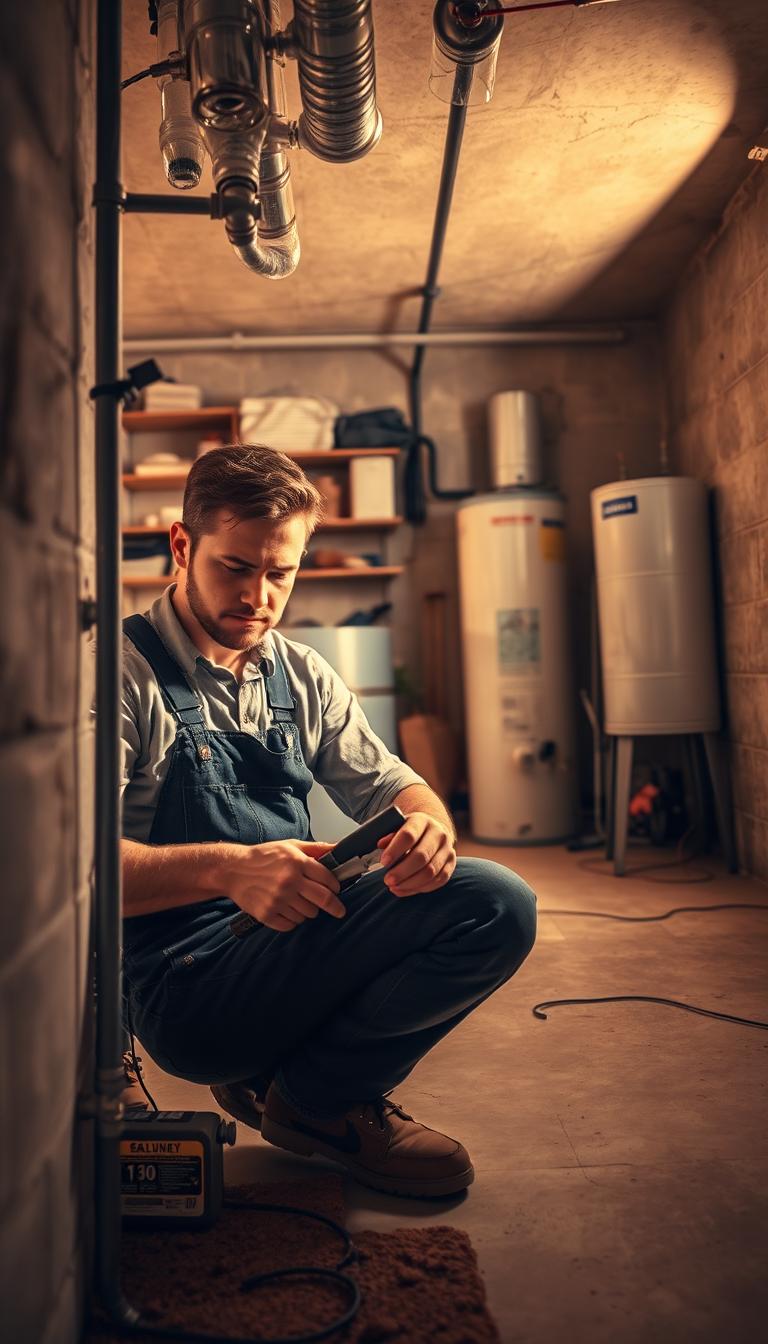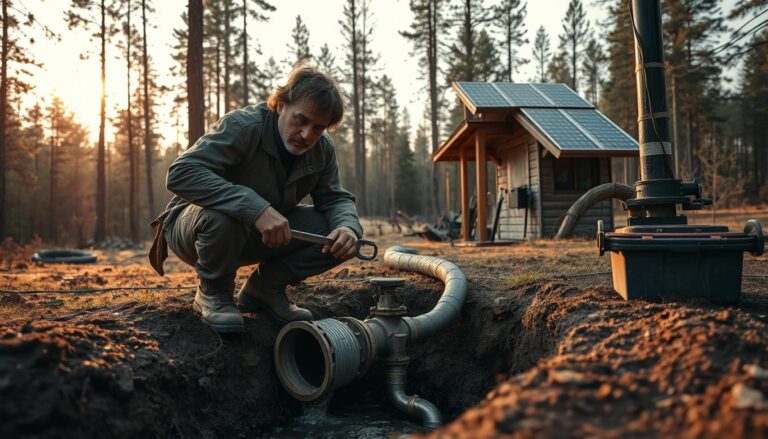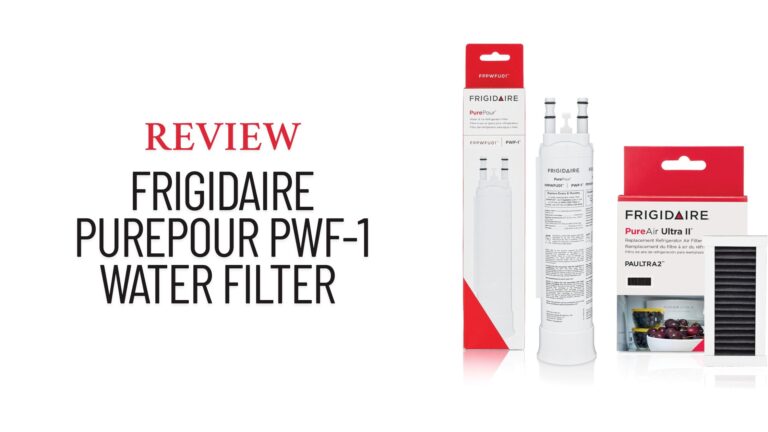7 Common Home Water System Problems and How to Fix Them
Are you tired of dealing with a leaky faucet or low water pressure in your home? Many homeowners face various water system issues daily, from contaminated water to clogged drains.
According to the Environmental Protection Agency (EPA), most households encounter some form of water system problems. These issues not only cause inconvenience but can also lead to significant water damage and health risks if left unaddressed.
Understanding the common problems and knowing how to fix them can save you time, money, and stress. In this article, we will explore the most frequent home water system issues and provide practical solutions to help you resolve them effectively.
Key Takeaways
- Identify common home water system problems
- Learn how to diagnose water system issues
- Discover practical solutions for resolving home water system issues
- Understand the importance of regular water system maintenance
- Find out when to call a professional for home water system repairs
Understanding Your Home Water System
Knowing the intricacies of your home’s water system can help you identify potential issues before they become major problems. A typical home water system is made up of various components that work together to supply water throughout the house.
Components of a Typical Home Water System
The main components include pipes, fixtures, and appliances. Pipes are the veins of your water system, carrying water from the main supply line to various parts of your home. Fixtures, such as faucets and toilets, are where you interact with the water system daily. Appliances like water heaters and dishwashers also play crucial roles.
How Water Flows Through Your Home
Water flows into your home through the main supply line, branching off to different areas. Understanding this flow is crucial for Troubleshooting Water System Problems and applying Water System Maintenance Tips. By knowing how water circulates, you can better identify where issues may arise.
7 Common Home Water System Problems and How to Fix Them
Understanding the common issues with home water systems is crucial for maintaining a safe and efficient household. Homeowners often encounter a range of problems that can lead to significant inconvenience and costly repairs if not addressed promptly.
Overview of Common Issues
Common water system failures include low water pressure, toilet hardware failure, and sediment buildup. These issues can arise from various sources, such as clogged pipes, faulty fixtures, or mineral deposits. Identifying the root cause of the problem is essential for applying the correct fix.
The Importance of Timely Repairs
Timely repairs are vital to prevent minor issues from becoming major repairs. DIY water system fixes can be an effective way to address common problems, saving homeowners time and money. By understanding the causes of common water system failures and applying the appropriate DIY fixes, homeowners can maintain a well-functioning water system.
Proactive maintenance not only enhances the longevity of the water system but also ensures the safety and comfort of the household. Regular checks and prompt repairs can help avoid more severe problems, such as leaks or system failures, which can lead to costly damages.
Problem1: Low Water Pressure
One of the most common complaints homeowners have is low water pressure. This issue can stem from various causes, including mineral buildup, leaks, or problems with the municipal water supply. Understanding the root cause is crucial to resolving the problem effectively.
Common Causes of Low Water Pressure
Low water pressure can be attributed to several factors. Mineral buildup from hard water can clog pipes and fixtures, reducing water flow. Leaks in the plumbing system can also significantly lower water pressure. Additionally, issues with the water supply, such as municipal supply problems or well pump failures, can impact water pressure.
DIY Diagnosis Steps
To diagnose low water pressure, start by checking for visible leaks under sinks and around appliances. Inspect your water meter to see if it’s moving when all water-using devices are turned off, indicating a potential leak. You can also check the aerators on your faucets for mineral buildup.
Solutions and Fixes
Once you’ve identified the cause, you can proceed with the appropriate fix.
Quick Fixes for Minor Pressure Issues
For minor issues, cleaning or replacing clogged aerators and checking for simple leaks can often restore normal water pressure. Using a water pressure test kit can also help identify if the issue is with your home’s plumbing or the water supply.
Long-term Solutions for Persistent Problems
For more persistent problems, consider installing a water pressure booster pump or a whole-house water filtration system to address mineral buildup. If you suspect a leak, using a professional leak detection service can be invaluable.
| Cause | Symptoms | Solution |
|---|---|---|
| Mineral Buildup | Reduced water flow, spots on dishes | Water filtration system, descaling |
| Leaks | Low water pressure, increased water bill | Leak detection, repair |
| Supply Issues | Consistently low pressure | Contact water utility, consider booster pump |
By understanding the causes and applying the appropriate fixes, homeowners can resolve low water pressure issues, ensuring a steady and reliable water supply.
Problem2: Leaky Pipes and Fixtures
One of the most prevalent problems in home water systems is leaky pipes and fixtures, requiring immediate attention. Leaks can occur due to various reasons such as corrosion, damage, or improper installation, leading to water waste and potential damage to your home.
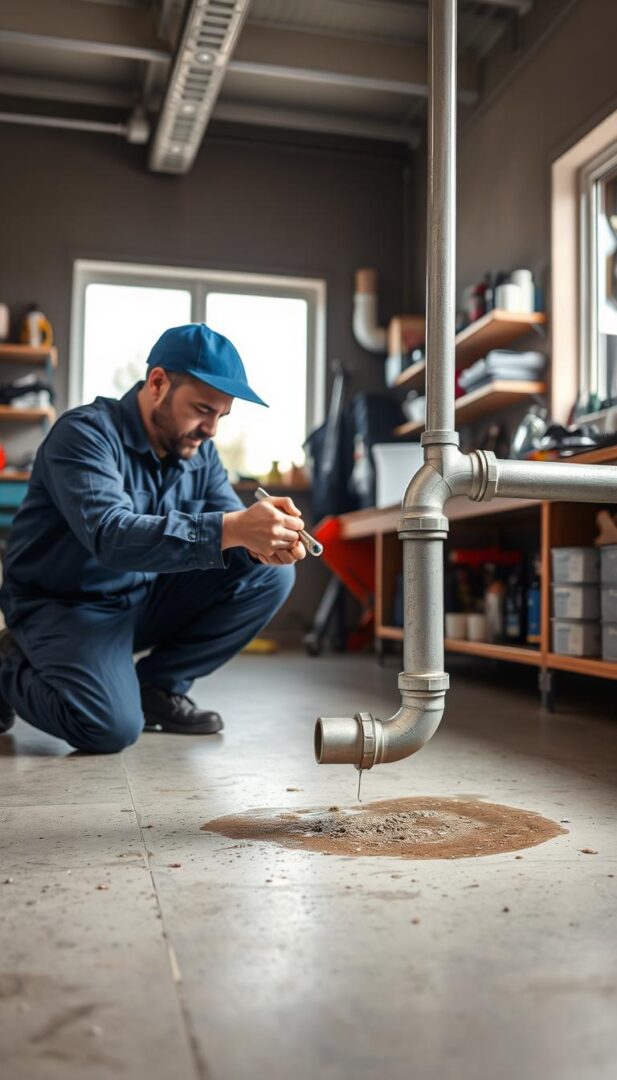
Identifying Different Types of Leaks
It’s crucial to identify the type of leak you’re dealing with to apply the appropriate fix. Leaks can be categorized into several types, including:
- Leaks from pipe joints and connections
- Leaks due to damaged or corroded pipes
- Leaks from fixtures such as faucets and toilets
Temporary Fixes for Emergency Situations
In emergency situations, temporary fixes can help mitigate the damage until a permanent solution is applied. Some temporary measures include:
- Using pipe repair clamps or epoxy to seal leaks
- Tightening loose connections
- Replacing worn-out washers or gaskets
Long-term Repair Solutions
For a lasting solution, it’s essential to address the root cause of the leak. This may involve:
Fixing Pipe Joints and Connections
Inspecting and replacing worn-out seals or gaskets at pipe joints and connections can prevent future leaks. Ensuring that all connections are secure and properly sealed is key to Fixing Water System Leaks effectively.
Replacing Damaged Sections
In cases where pipes are damaged beyond repair, replacing the affected sections is necessary. This involves cutting out the damaged part and installing new pipe sections, ensuring that they are properly connected and sealed.
By understanding the causes of leaky pipes and fixtures and applying the appropriate fixes, homeowners can prevent water waste and potential damage to their homes. Regular maintenance and inspections are crucial in identifying and addressing leaks before they become major issues.
Problem3: Clogged Drains and Pipes
Clogged drains and pipes can cause significant disruptions to your daily life, but there are several strategies to prevent and fix these issues.
Prevention Strategies
Preventing clogs is often easier than dealing with them after they’ve formed. Regular maintenance is key. Being mindful of what goes down your drains can significantly reduce the risk of clogs. Avoid disposing of grease, oil, and food scraps down the kitchen sink, and use a drain screen to catch hair and other debris in the bathroom.
- Regularly clean your drains with hot water.
- Avoid pouring grease or oil down the drain.
- Use a drain screen to catch hair and other particles.
Natural Cleaning Methods
For minor clogs, natural cleaning methods can be effective. One popular method is using baking soda and vinegar. Pouring 1/2 cup of baking soda down the drain, followed by 1/2 cup of vinegar, can help break down blockages. Let the mixture sit for a few hours before rinsing with hot water.
Benefits of Natural Methods: They are environmentally friendly and safe for your pipes.
When to Use Chemical Cleaners
Chemical drain cleaners can be effective for more stubborn clogs, but they should be used with caution. These products contain harsh chemicals that can damage your pipes or cause injury if not handled properly. Always follow the manufacturer’s instructions and consider wearing protective gear.
Caution: Chemical cleaners can harm your pipes and the environment.
Severe Clogs: DIY vs. Professional Help
For severe or recurring clogs, it may be necessary to seek professional help. While DIY methods can be effective for minor issues, more serious blockages may require the expertise of a plumber. They have the tools and knowledge to diagnose and fix complex problems.
When to Call a Pro: If you’ve tried DIY methods and the clog persists, or if you’re unsure about the cause of the clog, it’s time to call a professional plumber.
Problem4: Water Heater Issues
A malfunctioning water heater can lead to a range of problems, from lukewarm showers to significant water damage. Understanding the common issues and how to address them is crucial for maintaining a comfortable and safe home environment.
No Hot Water: Causes and Solutions
One of the most frustrating water heater issues is a lack of hot water. This problem can stem from several causes, including a faulty thermostat, a malfunctioning heating element, or a leak in the system. To diagnose the issue, start by checking the thermostat settings and ensuring that the heating elements are functioning correctly. If the problem persists, it may be necessary to inspect the system for leaks or other damage.
Key steps to diagnose no hot water:
- Check thermostat settings
- Inspect heating elements
- Look for signs of leaks
Strange Noises from Your Water Heater
Strange noises coming from your water heater, such as clanking, banging, or whistling sounds, can be alarming. These noises often indicate sediment buildup or other issues within the tank. Regular maintenance, such as flushing the tank, can help prevent these problems. In some cases, the noise might be a sign of a more serious issue, like a failing heating element, which may need to be replaced.
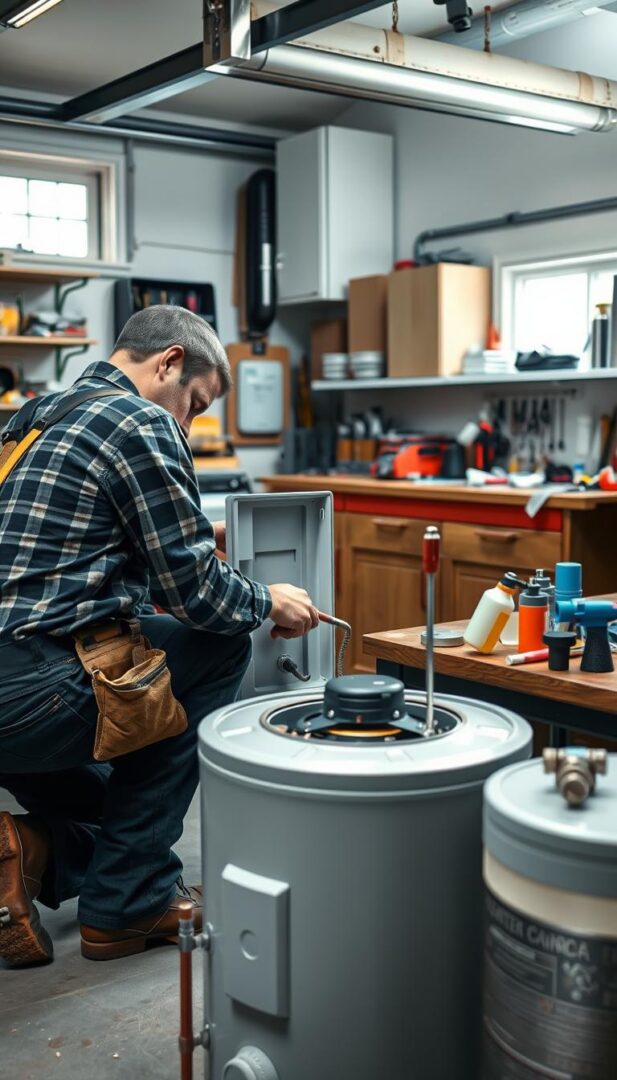
Leaking Water Heater Fixes
A leaking water heater is a serious issue that requires immediate attention. Leaks can occur due to corrosion, high pressure, or loose connections. To fix a leak, first identify the source: check the temperature and pressure relief valve, inspect the tank for rust or corrosion, and tighten any loose connections. Depending on the severity of the leak, you might need to replace the water heater or specific components.
Maintenance Tips to Extend Water Heater Life
Regular maintenance is key to extending the life of your water heater. This includes checking the anode rod annually, insulating the water heater to reduce energy consumption, and setting the temperature to an optimal level (around 120°F). Additionally, flushing the tank periodically can help remove sediment buildup, improving efficiency and reducing the risk of damage.
By following these maintenance tips, homeowners can significantly prolong the lifespan of their water heater and ensure it operates efficiently.
Problem5: Hard Water and Mineral Buildup
Mineral-rich hard water can cause significant issues within your home’s plumbing, from fixture damage to appliance inefficiency. Hard water is characterized by high levels of minerals such as calcium and magnesium, which can lead to a variety of problems if not addressed.
Signs of Hard Water in Your Home
Identifying hard water involves looking out for several key signs. These include:
- Spots on dishes and glassware
- Mineral deposits around faucets and on fixtures
- Dry skin and dull hair
- Increased soap usage
- Reduced efficiency and lifespan of water-using appliances
Removing Mineral Deposits from Fixtures
To remove mineral deposits, you can use a mixture of vinegar and water or a commercial descaling product. For severe buildup, it may be necessary to soak the affected fixtures.
Effective removal methods include:
- Soaking fixtures in a vinegar solution
- Using a descaling product according to the manufacturer’s instructions
- Gently scrubbing away deposits with a soft brush
Water Softener Solutions
Water softeners are a common solution to hard water problems. They work by removing the minerals that cause water to be hard, thus preventing mineral buildup.
Salt-Based vs. Salt-Free Systems
Salt-based systems are effective but require regular maintenance and salt replenishment. Salt-free systems, on the other hand, condition water without removing minerals, offering a lower maintenance alternative.
Installation and Maintenance Considerations
When choosing a water softener, consider factors such as household size, water usage, and the level of hardness. Regular maintenance is crucial for the longevity and effectiveness of the system.
| System Type | Maintenance Level | Effectiveness |
|---|---|---|
| Salt-Based | High | High |
| Salt-Free | Low | Medium |
Problem6: Discolored or Bad-Tasting Water
Noticing discoloration or an off taste in your drinking water is a red flag that warrants further investigation. Discolored or bad-tasting water can indicate the presence of various contaminants, affecting not just the taste but also potentially your health.
Identifying Water Contaminants by Color and Taste
The color and taste of your water can provide initial clues about the type of contaminants present. For instance, rust-colored water often indicates the presence of iron or rust particles, while cloudy or murky water might suggest sediment or particulate matter. Water with a strong odor or bad taste could be contaminated with bacteria, viruses, or other microorganisms.
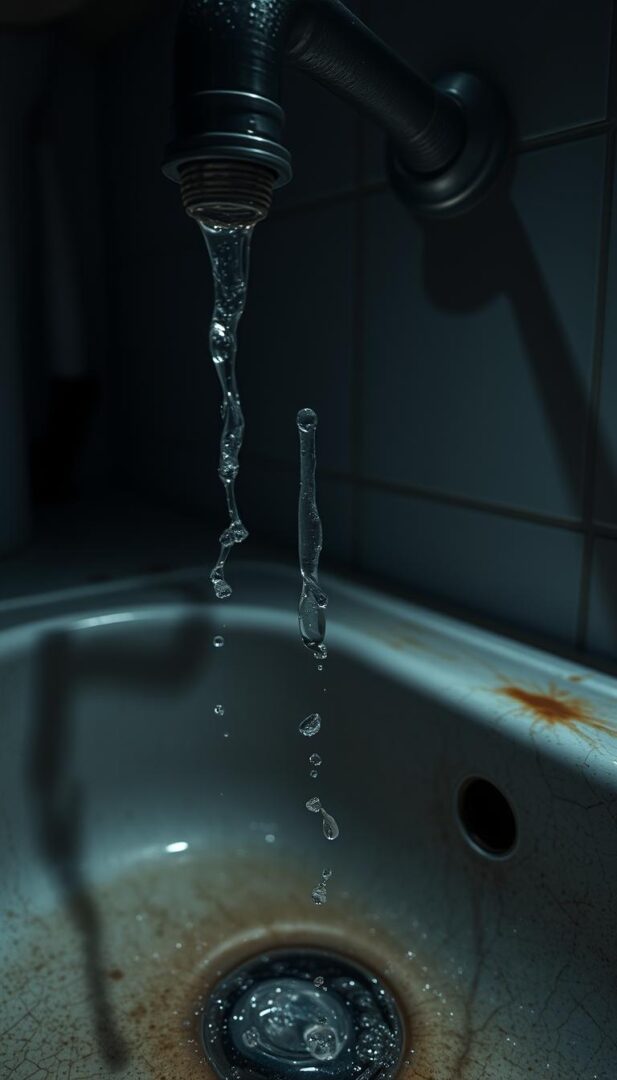
Testing Your Water Quality
To accurately determine the quality of your water, it’s essential to conduct a water test. Home water testing kits are available, or you can hire a professional to do it for you. Testing will help identify specific contaminants, such as lead, chlorine, or nitrates, allowing you to choose the appropriate filtration method.
Filtration Options for Different Contaminants
Once you’ve identified the contaminants, you can select a suitable filtration system. Various options are available, including activated carbon filters, reverse osmosis systems, and ultraviolet (UV) light purifiers. Each type targets different types of contaminants.
Whole-House vs. Point-of-Use Filters
When choosing a filtration system, you must decide between whole-house filters, which treat all the water in your home, and point-of-use filters, which are installed at a single faucet. Whole-house filters provide comprehensive protection, ensuring that all water sources are clean. In contrast, point-of-use filters are more targeted and can be more cost-effective for specific needs.
Resolving issues with discolored or bad-tasting water involves identifying the cause, testing the water quality, and applying the appropriate DIY water system fixes. By understanding your options and taking the right steps, you can enjoy clean, safe, and great-tasting water throughout your home.
Problem7: Running Toilets and Inefficient Fixtures
Running toilets can be a significant source of water waste in homes, making it essential to address the issue promptly. Fixing or replacing toilet components and upgrading to water-efficient fixtures can mitigate this issue.
Fixing a Running Toilet
A running toilet is often caused by a faulty flapper or fill valve. To fix it, start by checking the flapper for any signs of wear or misalignment. Adjusting or replacing the flapper can usually resolve the issue.
- Inspect the flapper and chain for proper alignment and length.
- Check the fill valve for any debris or mineral buildup.
- Adjust the water level to ensure it’s not too high.
Replacing Worn Toilet Components
Over time, toilet components can wear out, leading to inefficiencies. Replacing these parts is a straightforward DIY task that can significantly improve your toilet’s performance.
Common components to replace include:
- The flapper
- The fill valve
- The flush valve seal
Upgrading to Water-Efficient Fixtures
Upgrading to water-efficient fixtures is a proactive step towards reducing water waste. Modern toilets and fixtures are designed to use less water while maintaining performance.
Water-Saving Technologies
Some of the latest water-saving technologies include dual-flush toilets and low-flow faucets. These fixtures not only save water but can also reduce your utility bills.
By implementing these DIY Water System Fixes and incorporating Water System Maintenance Tips, homeowners can significantly reduce water waste and improve the efficiency of their home water systems.
Essential Tools and Materials for DIY Water System Repairs
DIY water system fixes require a thoughtful approach, starting with the essentials: the right tools and materials. Having these on hand can make a significant difference in the success and efficiency of your repairs.
Basic Toolkit for Water System Maintenance
A basic toolkit for water system maintenance should include fundamental items such as pipe wrenches, adjustable wrenches, and Teflon tape. These tools are crucial for tackling common issues like leaky faucets and loose pipe connections.
- Pipe wrenches for gripping and twisting pipes
- Adjustable wrenches for various bolt and nut sizes
- Teflon tape for creating watertight seals on threaded pipe connections
Specialized Tools for Specific Repairs
While a basic toolkit covers general repairs, specialized tools are often necessary for more complex tasks. For instance, a pipe snake or auger can be indispensable for clearing clogs in drains and pipes.
| Tool | Use |
|---|---|
| Pipe Snake/Auger | Clearing clogs in drains and pipes |
| Pipe Cutter | Cutting pipes to the correct length |
| Water Pressure Test Kit | Measuring water pressure in your system |
Quality Materials That Last
Using quality materials for your DIY water system repairs is just as important as having the right tools. High-quality pipes, fittings, and fixtures may cost more upfront but can save you from future headaches and additional expenses.
Investing in quality materials ensures durability and reduces the need for frequent repairs.

When to Call a Professional Plumber
There are instances where troubleshooting water system problems requires more than just DIY knowledge; it demands professional expertise. While homeowners can handle many home water system repairs, certain situations necessitate the intervention of a skilled plumber.
Warning Signs of Serious Problems
Identifying the warning signs of serious water system problems is crucial. These signs include persistent leaks, significant water pressure drops, and signs of water damage. If you notice any of these issues, it’s time to call a professional.
Questions to Ask Before Hiring
Before hiring a plumber, it’s essential to ask the right questions. These include inquiries about their experience with similar issues, their licensing and insurance, and their approach to solving the problem. Always verify their credentials to ensure you’re hiring a qualified professional.
What to Expect from Professional Service
When you hire a professional plumber, you should expect a thorough diagnosis of the issue, a clear explanation of the necessary repairs, and a detailed estimate of the costs involved. Professional plumbers will also provide guidance on how to prevent future problems, ensuring your home water system operates efficiently.
By knowing when to call a professional and what to expect from their service, homeowners can ensure their water system issues are resolved effectively and efficiently.
Conclusion
By understanding the 7 Common Home Water System Problems and knowing how to address them, homeowners can maintain their plumbing systems effectively, preventing minor issues from becoming major problems. Resolving Home Water System Issues promptly is crucial to avoid costly repairs and ensure a safe and healthy water supply.
Throughout this article, we’ve explored various common issues that can affect your home’s water system, from low water pressure and leaky pipes to clogged drains and water heater issues. By being aware of these potential problems, you can take proactive steps to maintain your water system, reducing the risk of unexpected breakdowns and costly repairs.
Regular maintenance and timely repairs are key to extending the life of your plumbing system. By staying informed and taking action when needed, you can ensure your home’s water system operates efficiently and effectively, providing a safe and reliable source of water for you and your family.

